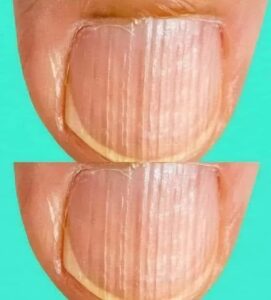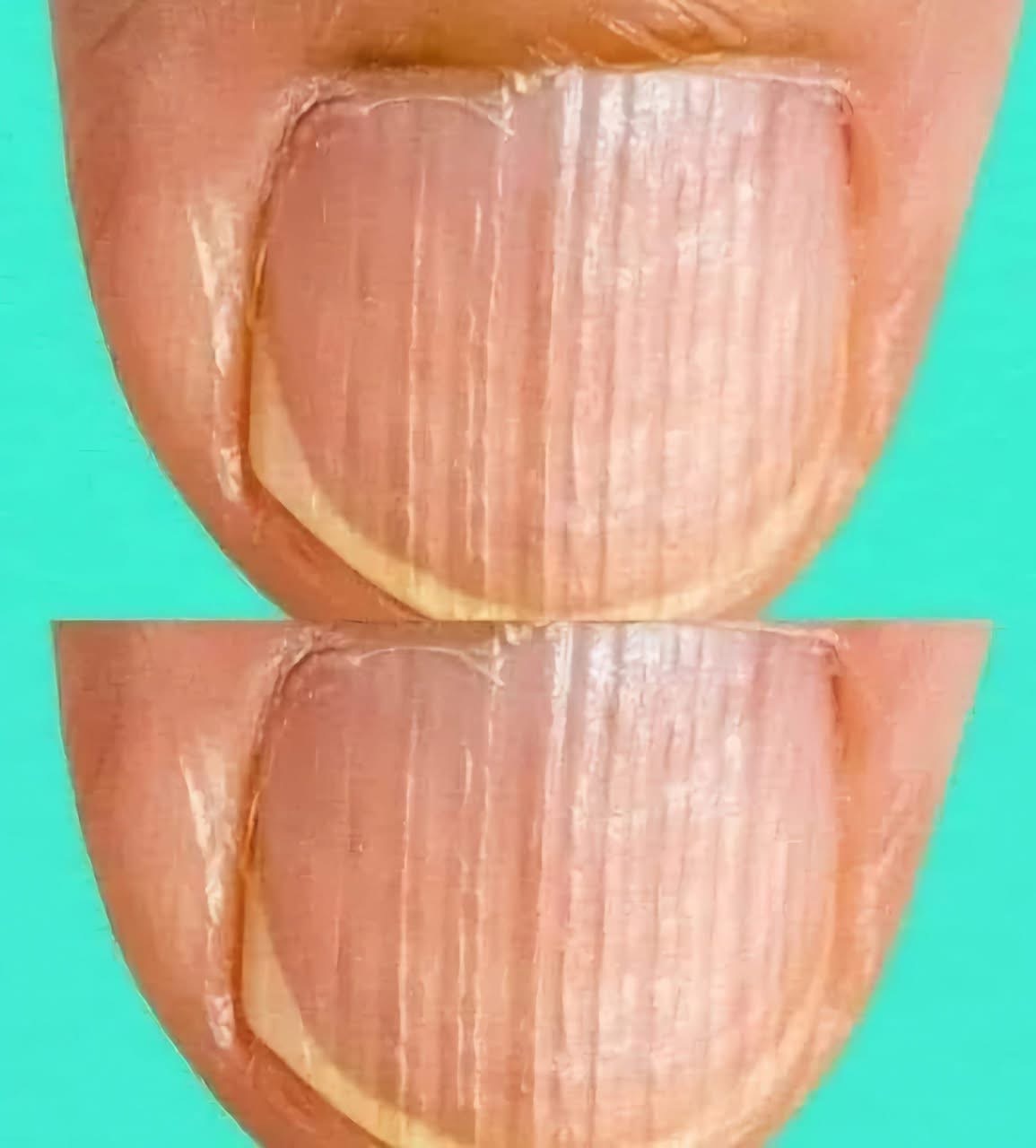
Have you ever examined your nails and considered that they might reveal more about your health than merely showcasing the latest manicure trends? Your nails can serve as important indicators of your overall health, often reflecting underlying conditions that might otherwise go unnoticed. Subtle variations in color, shape, and texture can convey a much broader narrative.
“For most individuals, nail health typically reflects poor nutrition or digestive issues rather than a serious underlying disease.” Therefore, while abnormal nails are not always a cause for panic, if the issue persists or is accompanied by other symptoms—such as fatigue, weakness, swelling, heart palpitations, or weight loss—it is advisable to seek medical advice.
Beau lines are pronounced grooves or indentations that develop on the surface of nails. Dr. Bhavini Shah, a physician at Lloyds Pharmacy Online Doctor, clarifies that these lines appear when the growth of nails temporarily slows or ceases, often due to a significant illness or infection. For instance, some individuals have experienced Beau lines following a Covid-19 infection.
In more severe instances, nail growth may halt entirely, resulting in a gap known as onychomadesis. This condition can arise after experiencing considerable stress, such as from chemotherapy, injury, or a high fever. While Beau lines may appear and disappear without concern, it is advisable to seek medical advice if they recur or if onychomadesis occurs.
Club nails are characterized by swelling of the fingers, leading to a noticeable alteration in their shape. This change can develop gradually, making it easy to overlook initially. Dr. Shah warns that the presence of red or purple lines beneath the nails, not attributable to an injury, may signal heart disease. Clubbing, where the nails curve downwards towards the fingers, can also indicate heart disease, which is a leading cause of mortality globally. Additional symptoms of heart disease may include severe fatigue, swollen ankles, chest pain, and discomfort in the stomach, legs, arms, jaws, or back. It is important to note that some individuals may naturally have clubbed nails.
Spoon-shaped nails that curve inward may suggest iron deficiency anemia, according to Dr. Shah. This condition is particularly prevalent during or after pregnancy and results from low iron levels in the bloodstream. Other signs of anemia include fatigue, shortness of breath, pale skin, and headaches.
Anemia can also arise from inadequate nutrition, celiac disease, or digestive issues. Identifying the underlying cause of iron deficiency is essential, so scheduling an appointment with a general practitioner is recommended if anemia is suspected. Fortunately, anemia is typically manageable through dietary changes and iron-rich supplements.
Pitting or Nail Indentations
Individuals with skin disorders like psoriasis, eczema, or alopecia areata (a type of hair loss) often exhibit small indentations or pits on their nails. Dr. Shah points out that these conditions typically present additional external symptoms. For instance, psoriasis is characterized by dry, scaly patches on the skin, eczema results in dry, itchy, cracked, and painful skin, while alopecia areata leads to patchy hair loss.
If you observe changes in your nails, consulting a dermatologist can help determine the underlying cause. In less severe instances, treatment may not be required; however, more significant cases might necessitate corticosteroid therapy or vitamin D3, along with management of the primary condition.
Melanoma
While many recognize that unusual skin spots can signal cancer, melanoma, the most aggressive type of skin cancer, can also manifest on the nails. If you notice a dark streak running along the nail, it is crucial to seek evaluation from a dermatologist. Although this dark line does not always indicate cancer, it is advisable to have it examined promptly, as early detection of melanoma significantly improves treatment outcomes.
Terry’s Nails
Terry’s nails are identified by a nail appearance where more than two-thirds of the nail bed is white, with only a red or pink band visible at the tips. Dr. Shah notes that this condition is frequently linked to liver disease. Additional symptoms of liver disease may include fatigue, jaundice, and decreased appetite. Terry’s nails can also develop as a natural part of aging or may signal other serious health issues such as heart disease or diabetes.
Yellow Nails
Yellow nails can arise from various factors, with fungal infections being the most prevalent cause. This condition may lead to thickening and crumbling of the nails, although it is typically not painful. In rare instances, yellow nails may be associated with conditions such as diabetes, psoriasis, thyroid disorders, or respiratory diseases.
Resources:
“From Ridges to Peeling: What These 8 Nail Brands Reveal About Your Health,” HealthLine, Abigail Rasinsky, July 14, 2023.
“Doctor Warns: A Nail Symptom That May Indicate a Serious Illness,” Wales Online, Neil Shaw, July 19, 2024.
“12 Nail Changes That Should Be Evaluated by a Dermatologist,” Aad.
“Common Nail Disorders: Identification and Treatment,” Very Well Health, Anna Giorgi, April 3, 2024.
In summary, while alterations in nails are frequently linked to benign causes such as injuries or inadequate nutrition, they can also be significant indicators of underlying health issues. Symptoms ranging from Beau’s lines to yellowing nails can provide valuable insights into an individual’s overall health.
It is essential to keep an eye on your nails for any unusual changes and to seek medical advice if you experience persistent issues or if these changes are accompanied by other symptoms. Early identification and diagnosis can greatly influence the management of various conditions related to nail abnormalities, so do not hesitate to reach out to a healthcare professional.
